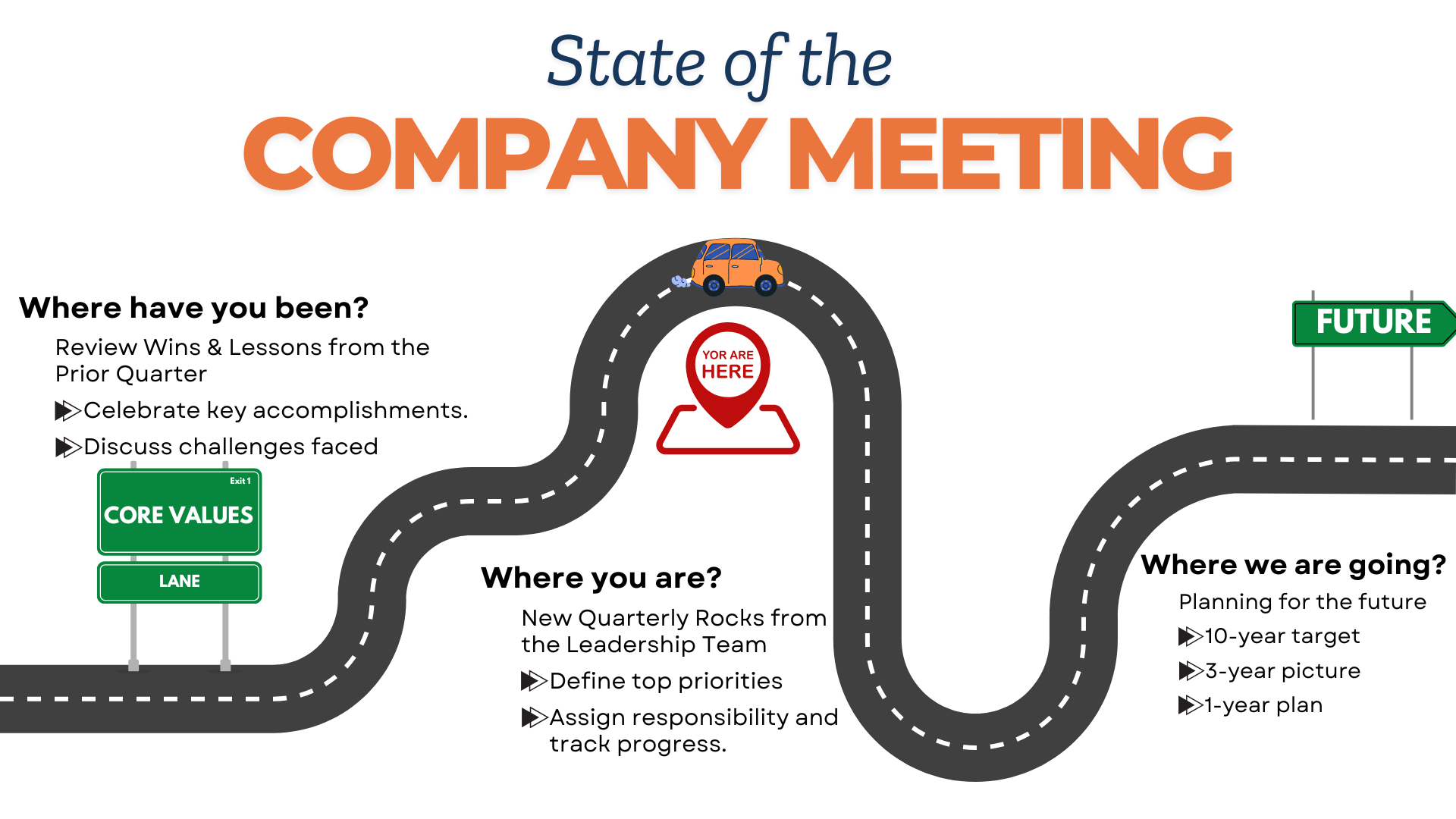By Amy Morin
•
May 21, 2024
The Power of Data in EOS: Leveraging Leading Indicators to Win As an EOS Implementer, I often emphasize the importance of the Data Component in the Entrepreneurial Operating System (EOS). This critical component, embodied by the Scorecard, serves as a vital tool for business owners and leadership teams. It helps them monitor performance, anticipate issues, and drive success. Today, I want to delve into the nuances of the Scorecard, focusing on how it provides early indicators of change, highlights trouble spots, and distinguishes between playing to win and playing not to lose. The Role of the Scorecard in EOS The Scorecard in EOS serves two main purposes: Identifying when you're off course : The Scorecard acts as a business's GPS, alerting you when things are deviating from the planned route. By tracking specific metrics, it signals when corrective actions are needed to steer the company back on track. Showing that the right people are in the right seats : It helps ensure that your team members are performing well in their roles, contributing to the overall success of the company. When the Scorecard reflects positive results, it's an indicator that your team is functioning effectively and efficiently. Leading Indicators: Your Early Warning System In the context of the EOS Scorecard, leading indicators are the metrics that predict future performance. Unlike lagging indicators, which reflect past performance, leading indicators provide foresight. They alert you to potential issues before they become full-blown problems, allowing you to take proactive measures. Examples of Leading Indicators: Sales Pipeline Volume : A dip in the number of new leads or opportunities can signal future revenue challenges. Employee Engagement : A drop in engagement levels can indicate potential morale or productivity issues, and can be an early warning of future turnover or decreased performance. Customer Feedback Scores : Declining customer satisfaction scores can forecast future retention problems and lost sales. Recognizing Trouble Spots: What the Scorecard Tells You A well-designed Scorecard helps you identify areas of concern quickly. Here are a few key indicators that might suggest your business is in trouble: Consistent Missing of Targets : If you notice that specific metrics are consistently below target, it’s a sign that something is amiss. For instance, if your sales team is regularly falling short of their goals, it could indicate a need for better training or more resources. Negative Trends : Look for patterns. Are your customer satisfaction scores declining month over month? Are operational costs steadily increasing? These trends can be early warnings of deeper issues. Anomalies in Leading Indicators : Sudden changes in leading indicators, such as a spike in employee turnover or a sudden drop in new customer inquiries, can alert you to potential problems that need immediate attention. Playing to Win vs. Playing Not to Lose In the world of business, mindset matters. The Scorecard can help you distinguish between a team that is playing to win and one that is merely playing not to lose. Playing to Win : This mindset is about being proactive, innovative, and growth-oriented. Teams that play to win use their Scorecard to identify opportunities for improvement and expansion. They set ambitious goals and are always looking for ways to exceed expectations. Playing Not to Lose : Conversely, this mindset is more defensive. Teams that play not to lose are primarily focused on avoiding mistakes and maintaining the status quo. Their Scorecard might reflect a more conservative approach, with targets set just to avoid failure rather than to achieve excellence. Using the Scorecard to Foster a Winning Culture To cultivate a winning culture within your organization, leverage your Scorecard to: Set Ambitious, Yet Achievable Goals : Encourage your team to aim high and push beyond their comfort zones. Celebrate Wins : Recognize and celebrate when team members meet or exceed their targets. This boosts morale and reinforces a culture of success. Foster Accountability : Use the Scorecard to hold everyone accountable for their performance. When metrics are transparent and regularly reviewed, it creates a sense of ownership, responsibility and employee engagement. Conclusion The Data Component of EOS, exemplified by the Scorecard, is an indispensable tool for any business aiming to thrive. By focusing on leading indicators and understanding the early signs of trouble, you can steer your company towards success. Remember, the key is to use the Scorecard not just as a means of tracking performance, but as a strategic tool to inspire a mindset of playing to win. This proactive approach will help ensure your business continues to grow, scale, and succeed in an ever-changing landscape.







